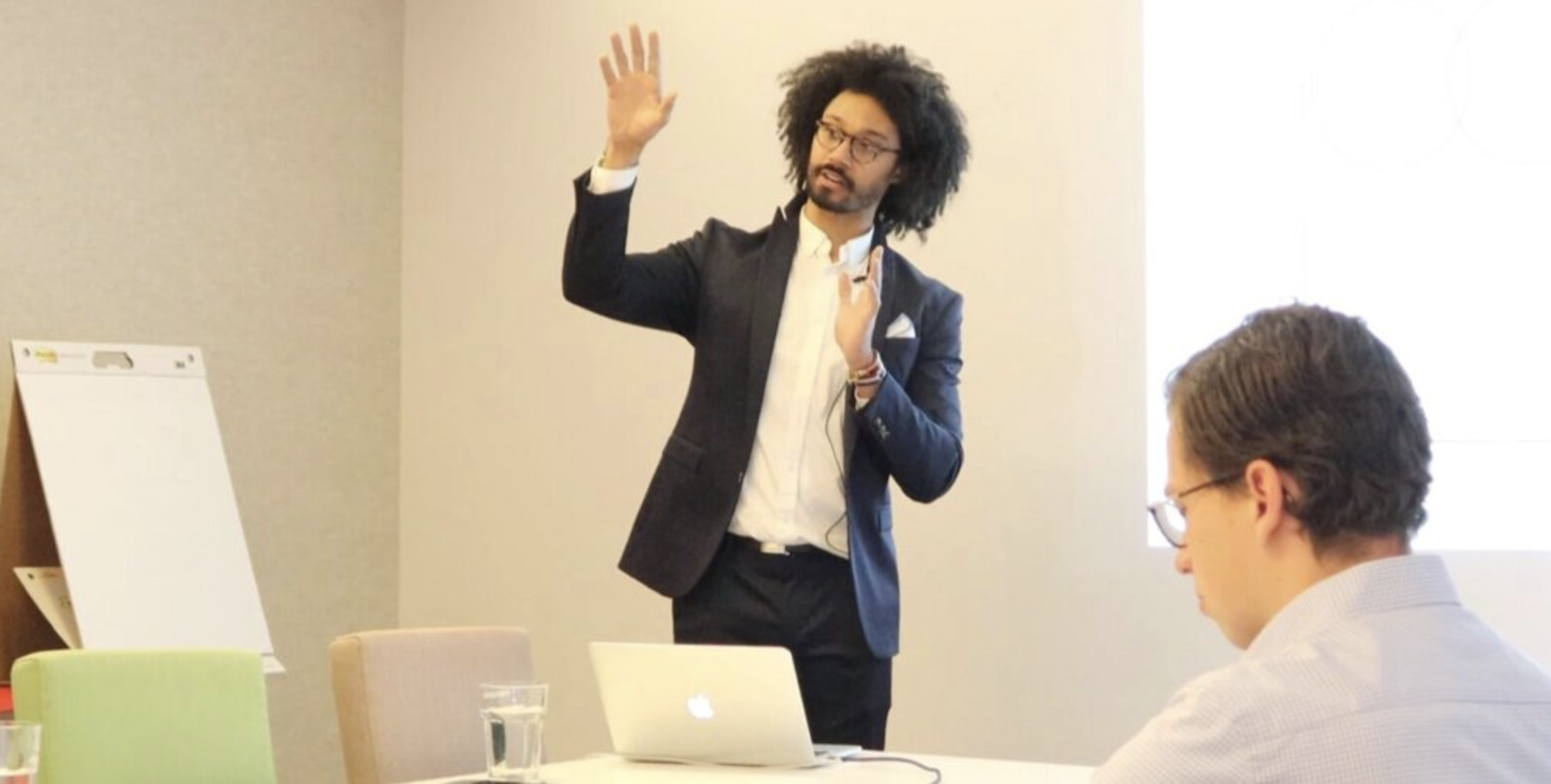6 tips for starting your presentation: get your audience hooked
You already know that first impressions are important. That goes for most things in life, and presentations are no exception. To start a presentation off on the right foot, you need to understand how to get your audience interested from the moment you walk in front of them.
If you’re thinking strobe lights and rainbow-colored pants, you’ve got the spirit, but that’s not exactly what we’re aiming for here.
After reading this post you’ll know how to start a presentation with these 6 tried and tested methods.
After all, the introduction will take up 10-20% of your presentation. So you may as well put some effort into making it good!
What about the end of your presentation? Read about the 9 best ways to end a presentation with maximum impact.
1 - Engage your audience from the start
If you’re watching a movie on Netflix, chances are you’re going to lose interest if things don’t spike your curiosity in the first couple of scenes. The same goes for the beginning of books, newspaper articles, or even songs!
Guess what? The same applies to presentations. You should always try getting people intensely interested in your presentation in the first few seconds of your introduction.
You might be wondering how you’re meant to get your audience interested so quickly, and your right to pay attention to that. Once you figure out the “how”, or the kind of “hook” you’re going to use to reel them in, that’s half the battle won.
An easy way to brainstorm your hook is to simply think about the most impactful aspect of your presentation and see how you can turn that into an attention-grabbing sentence, statement, statistic, or presentation slide.
There may be a statistic or a quote that you’re already using in your presentation that could serve this purpose. Something that perfectly sums up the main point of your presentation. In that case, try moving it into the first few minutes of your introduction to really get your audience listening.
Another tool that is often overlooked by presenters is using a controversial statement. Don’t worry if your audience thinks you’re being crazy, that means you have their undivided attention to prove them wrong! If people think you have an absurd stance on a certain topic, they’ll be desperate to hear how you justify yourself or back up your controversial beliefs.
2 - Keep presentation slides simple
Busy looking presentation slides and big blocks of text overwhelm your audience, turning your presentation into a reading exercise. If you need to show a lot of information on a slide, keep it simple by using charts or images. This is especially important at the start of a presentation when your audience might space-out if you bombard them with stats and long-winded pieces of information.
Your first slide should only have two key pieces of information: The title of your presentation, and your name.
Introducing your topic and creating that all-important first impression with your audience should be done by you in a dynamic and interesting way. Slides won’t get the job done on their own.
Slides should contain key points only, so narrow things down to 3-5 concise bullet points. If you’re using charts or images, don’t put more than two on each slide (or maximum three if it’s really justified).
As far as what you say is concerned, keep that just as short and sweet as your slides. Start off by talking about the bigger picture and getting people interested in seeing the rest of your presentation. Worry about the fine details when you get to the middle of your presentation and you need to dive deep into your main points.
3 - Only include essential information
Not everything you know about a topic should be part of your presentation. This is especially relevant to the beginning of a presentation. Giving your audience just enough key information to intrigue them will work wonders.
Remember: people are curious. If you give them all the details right off the bat, you’ll kill their curiosity before you even get to your second slide.
4 - Use anecdotes and stories
You might find yourself presenting in front of an audience that’s spent all day at a conference, is tired and unresponsive, or are just a tough crowd.
If that’s the case (or even if it’s not because this works for everyone) make your presentation stand out with personal stories, anecdotes, or abstract analogies.
Hitting them with a funny story that’s completely unrelated to your topic and then tying it into your presentation is a great way to break down that invisible wall that people put up when they’re not in the mood to pay attention.
Starting your presentation this way makes it sound like something that they actually want to listen to, rather than a tidal wave of statistics and industry jargon.
5 - Talk about yourself
Your audience isn’t only interested in your presentation. They also want to learn about you as a person. And when I say that, I don’t mean your name and email address.
Take some time to talk about how you got to where you are today, projects you’ve worked on in the past, why you’re interested in this particular topic, etc.
This helps you build rapport with your audience, and you’re no longer just a talking head with no name at the front of the room.
6 - Be consistent and real
There’s nothing worse than a presentation starting off energetic and exciting, and then immediately turning into something boring and serious. While it might be tricky to keep the very detailed parts of the presentation interesting, try your best to maintain a consistent energy from the introduction through to the closing statement.
Another thing: be yourself! Don’t start your presentation with some elaborate acting routine that isn’t in any way representative of who you are. Gaining the attention of your audience is important, but they’ll know if you’re being dishonest with them.
The bottom line about starting a presentation
The main takeaway here is to make the start of your presentation interesting, impactful, easy to understand, personal, and authentic. Don’t overload your audience and always keep them curious, even if they’re already familiar with your presentation topic.
That sounds like an impossible balancing act
What works for you?
How do you usually start a presentation? If you have any techniques or tips that you think I should include in this article, let me know in the comments below.







